


![]()
On August 28 the Martin Luther King Jr. National Memorial on the lawn in Washington DC will be dedicated. Three hundred thousand people are expected to attend the ceremony, thousands more than attended Dr. King’s legendary March on Washington on this same day in 1963. The monument is the first on the lawn to honor a man who didn’t serve as the country’s president. And it’s the result of decades of persistent lobbying and planning by the private foundation that raised funds and built the monument.
The Memorial shapes an axis connecting the Lincoln Memorial, where King gave his “I have a dream” speech at the end of that march, to the Jefferson Memorial, and overlooks the calm waters of the Tidal Basin. It leads visitors along a path between two large, cleft granite boulders towards a third into which sculptor Lei Yixin has carved a monumental standing figure of Dr. King. The likeness is remarkable, depicting the civil rights leader as a steely, majestic figure, looking far into the distance. President Obama is fond of repeating one of Dr. King’s best remembered sayings, “The arc of history is long, but it bends towards justice.” The Memorial illustrates how far American history has progressed, from slavery to emancipation to equal rights, and inspires us to keep moving forward.
(more…)


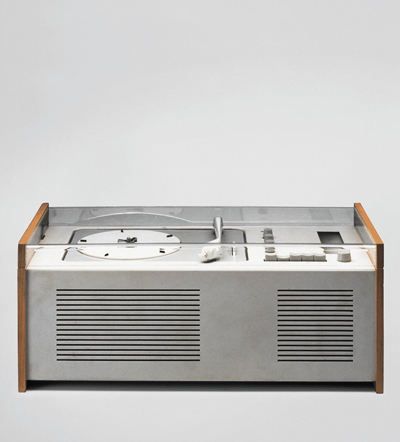
SK4 record player, designed by Dieter Rams and Hans Gugelot, courtesy of Dieter Rams.
Can you remember the first time you picked up an iPod, and how stunning it was to feel the seamlessness of its surfaces, the subtlety of its controls, and the weight of it in your hands? Those qualities, so perfect, are the work of a team of ace product designers at Apple led by Jonathan Ive. It’s no wonder then that Ive wrote the introduction to “Dieter Rams: As Little Design as Possible,” a new book about this other, legendary product designer who headed the design department at Braun from 1955 to 1980. Rams’ canonical designs for the German appliance company, Ive says, have inspired many Apple products. The transistor, alarm clocks, record players, cigarette lighters, and other small machines Rams and his team designed are seductive in their simplicity, their modernity, and their naturalism. While each is as finely-composed as an abstract sculpture there is also something, as Ive says, “inevitable” about its design. You feel as if it could not have been designed any other way.
(more…)

Click for slideshow Palast 2007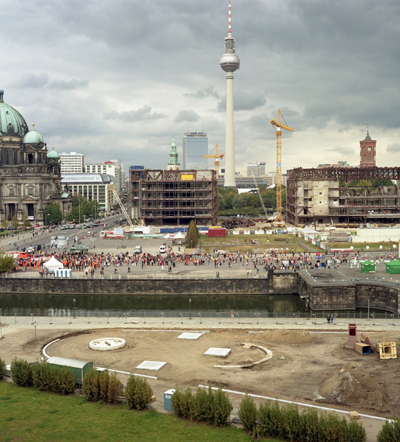
![]()
Just as New Yorkers are scrutinizing the development of the World Trade Center site, Berliners are scrutinizing the development of the Palast der Republik site. The Palast, an immense, East German government building completed in 1976, was condemned for asbestos in 1992 and demolished from 2006 to 2010. Located along the River Spree, amid stately nineteenth century buildings, at the very heart of Berlin’s cultural and tourist district, it had become, after the wall fell in 1989, a very visible symbol of all the wrong things: communism, oppression, censorship, and very, very bad style. A long, low concrete slab covered with gold mirrored glass, it looked like a flashy high security prison. Inside, it housed administration spaces for the city’s communist government and public spaces (lounges, bars, cafes, a bowling alley) where citizens could socialize in state-sanctioned splendor. The interiors were finished in the style of the time, with shag carpets, colored wallpaper, and chrome chandeliers studded with globe lights.
To replace the Palast the city chose to reconstruct the shell of the eighteenth century castle that previously occupied the site, which was damaged during World War II and demolished in 1950. This new castle will house a museum, a library, and shopping mall. It’s a brazen act of historical amnesia, one that looks past an unattractive chapter in history to one that’s more palatable. The project, which was suspended for financial reasons, is slated for completion in the next decade. Just last month a temporary structure, with exhibition space and a lookout point for tourists, opened at the site.
(more…)

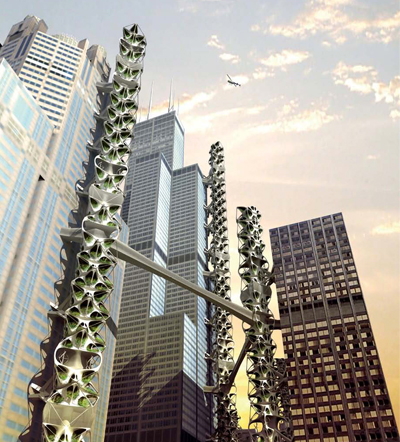
Symbiotic Interlock, Chicago. By Meta-Territory_Studio (Daekwon Park).
Earlier this summer, at a city council meeting in Cupertino, California, Steve Jobs unveiled a surprisingly static rendering for the new Apple corporate headquarters. It showed an big, glass donut-shaped building set down in a lush, edenic garden. (Perhaps some of the company’s gifted product designers can be brought on board to assist.) It was a textbook example of old-school utopian architecture, a gleaming, geometric structure sheltering a privileged, self-sustaining community. And it was strangely backward-looking, reminiscent of happy utopian visions from the 1960’s, like Buckminster Fuller’s domes, that expressed an unquestioning faith in the power of technology.
The new book “Utopia Forever,” which collects contemporary designs, both buildable and far-from-buildable, for future cities and landscapes, offers a far more ominous view. These are visions of a world where nature and technology are locked in continual battle, with nature more likely to come out on top. Now that we’re experiencing the first rattlings of global warming, troubled by extreme weather and dwindling natural resources, we’re more aware of the brute power embodied in earth, air and water. So the new utopias don’t offer blueprints for ideal communities so much as fundamental propositions for survival. Some are vessels floating above or sunk beneath rising oceans.
(more…)


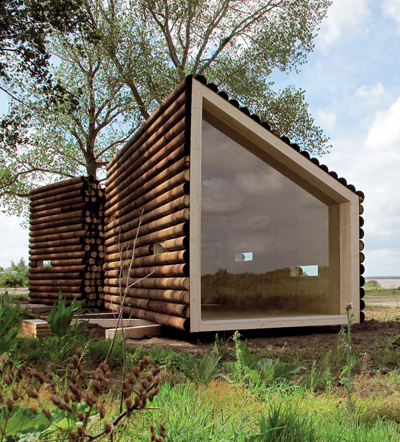
FLAKE HOUSE, 2006. By OLGGA Architectes.

Is the small house the new McMansion? With our diminishing faith in the economy and growing passion for sustainability, big, splashy houses have lost much of their luster and small, uniquely-designed homes are becoming increasingly desirable. Mimi Zeiger’s book “Micro Green: Tiny Houses in Nature” collects some innovative new designs that are small in scale but not it attitude.
Short of not building anything new at all, building at a smaller scale is the surest way to reduce a building’s environmental impact. Smaller buildings use less materials and energy, and are less disruptive to native ecologies. Small houses call on designers for expert space planning. And they call on the people living inside of it to make some significant lifestyle adjustments, like using a single space for multiple purposes, and keeping and storing fewer things. There’s simply no room for dining rooms, linen closets, and hot tubs. These homes also require a fundamental emotional shift, accepting that a small house doesn’t compromise one’s identity or quality of life. In that sense small house living has a lot in common with apartment living, something that city-dwellers are already accustomed to.

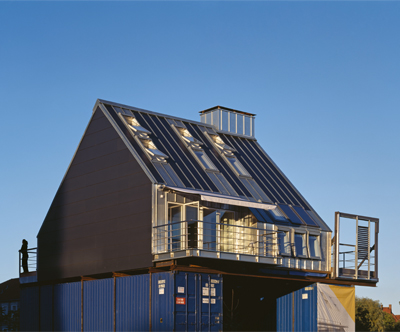
SOLTAG Exterior. SOLTAG Energy Housing, Horsholm, Denmark. Nielsen and Rubow, Cenrgia, Kuben Byfornyelse Danmark, and Velux Danmark.

There’s a mystifying number of terms used to describe green architecture and its components: renewable, sustainable, energy-saving, Energy Star, carbon-neutral, LEED-certified. Perhaps the most powerful term is zero-energy, or net-zero, which describes a building that takes no energy annually from the power grid and has no carbon emissions, so that it doesn’t burden existing systems and pollute. A new book, “Towards Zero-Energy Architecture: New Solar Design” by Mary Guzowski, takes a look at some contemporary buildings that meet this goal without sacrificing style.
Designers and builders can work to achieve zero-energy by installing appliances and heating and cooling systems that use minimal energy, and others that produce their own energy and can even contribute surplus energy back to the grid, like photovoltaic panels, geothermal wells and solar water heaters. But the most powerful strategies, and the ones more likely to shape the character of a building, are ones that incorporate so-called passive means to control light and heat, like site orientation, roof overhangs, operable windows, and shutters. Since heating, cooling and lighting are a building’s greatest energy loads, responding strategically to the sun and its movements is an important step to get to zero-energy.
(more…)

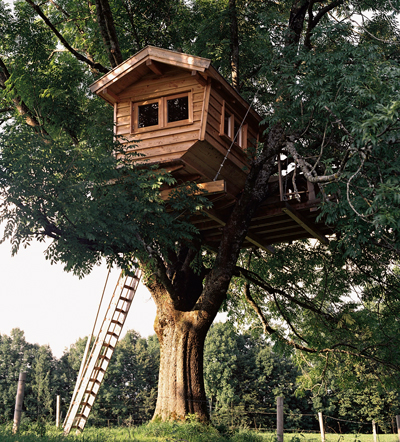
Treehouse Lake Tegern, Community Warngau, Germany, 2004. Image courtesy of DOM Publishers.
There’s something simultaneously childlike, hippieish and fanciful about a treehouse. Who would build their home in the supple, swaying branches of a tree? And who would feel comfortable living perched so precariously off the ground? The answer is, apparently, lots of people. A new book in DOM Publisher’s “Design and Construction Manual” series, “Treehouse,” offers up serious, practical, advice, and also some inspiring contemporary examples.
Most of the treehouses featured in the book are in Central Europe, and tucked within immense, leafy perennials that look as if they’re centuries old. The book’s overarching image, of a small cottage tucked within an explosion of foliage, has a fairy-tale resonance. The trees offer protection from sun and rain, and a sweet retreat from the pressures of everyday life. Treehouse living fulfills our yearning for a simpler, more elemental way of life, one less bound up in materialism and more closely aligned with natural rhythms.
(more…)


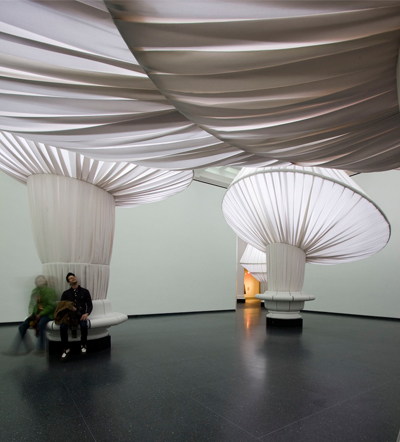
image courtesy of Situ Studio
Classical architecture carries powerful, authoritative associations, so much so that it can make even the loveliest space feel a bit stodgy and out-of-touch. So reORDER, an installation in the Great Hall of the Brooklyn Museum by local designers Situ Studio, is quite a feat. The installation takes the museum’s fine, neoclassical hall and gives it new life, reshaping it as a funky, informal event space.
The original museum building, designed by acclaimed nineteenth-century architects McKim Mead and White, is a stately, symmetrical mass graced with exquisite details like the Doric columns in its central hall. Through studying and manipulating the column profile Situ Studio invented sixteen new, unique profiles, and clad the existing columns with them. Each new column enclosure has a wide, solid base that can serve as a seat or as a ledge. And each one is topped with a soft, swollen, mushroom-like cap made from pleated white sailcloth draped over concealed wood hoops. The tops tip gently in different directions, obscuring the idea that columns are rational, weight-supporting elements. The overall effect is startling. The lucid geometry of the space vanishes, as does simple passage through it. The columns take over like giant, benevolent creatures. And the space, a central one that connects several galleries, becomes an engaging diversion.
(more…)

Click for Slideshow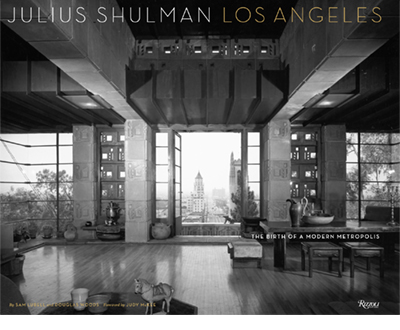
![]()
![]()
Julius Shulman is famous for supremely elegant architectural photographs of California houses by modern masters like John Lautner, Oskar Schindler, and Charles and Rae Eames. But a new book, “Los Angeles: The Birth of a Modern Metropolis,” which showcases his personal and editorial work from the 1930’s through the 1960’s, features shots of less exalted buildings, as well as panoramas taken in and around LA. Another side of the photographer emerges, one that’s interested in the texture of the evolving city. His landscape photos are especially revealing, showing a metropolis emerging bit-by-bit as outlying farmlands and fields are given over to new school campuses, industrial complexes, and residential subdivisions.
Whatever he’s photographing– a high school gymnasium, an assembly line, or a farm– Shulman composes the frame with the same forceful diagonal sight lines he uses in his architectural photos, lines that pull a viewer right in. That he’s able to structure views of everyday buildings like gas stations, car dealerships and diners in this manner is skillful. That he’s able to structure streetscapes and landscapes this way is remarkable. His forceful perspectives give even the broadest, most diffuse views a pointed, cinematic allure, one that’s entirely fitting given the business of the city.
(more…)

La Merced, Quito, 2010. Courtesy Yossi Milo Gallery, New York (Click for Slideshow)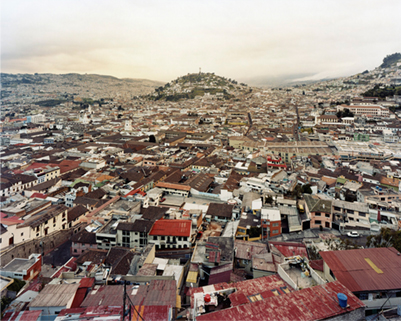
![]()
Cities have a power that’s highly impressionistic. More often than not, what we remember best about the ones we’ve visited isn’t the famous monuments but the mood of particular neighborhoods and streets.Sze Tsung Leong’s series of photographs “Cities,” on display now at Yossi Milo Gallery, consists of big, bird’s-eye views of different cities around the globe. In capturing the organization, architecture and geography of each metropolis, they go a long way to convey the character of these places.
Most of Leong’s photographs don’t fall into easy postcard views. They’re elegantly composed but richly textured and shadowed so that they have an impressive tactility. And they have a greater depth and angle of vision, so that they take in broader stretches than a typical cityscape. It’s a point of view that reveals some of the historic and technological forces that have shaped each place. In Ghent the low, twisting streets around the Medieval Cathedral give way to square blocks with modern commercial buildings. And in Cairo satellite antenna sprout from the debris-strewn roofs of dusty concrete apartment buildings.
Click for Slideshow
(more…)






 Facebook
Facebook Permalink
Permalink Digg
Digg Reddit
Reddit LinkedIn
LinkedIn StumbleUpon
StumbleUpon Tumblr
Tumblr

